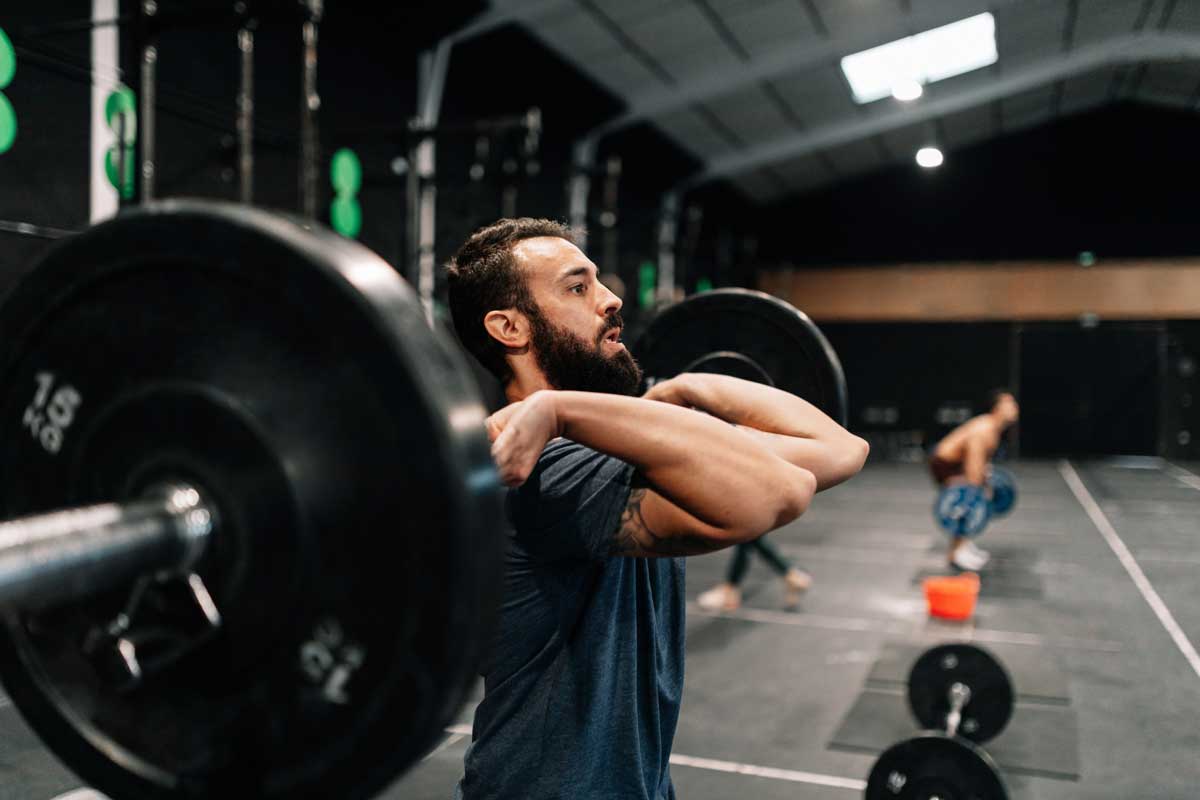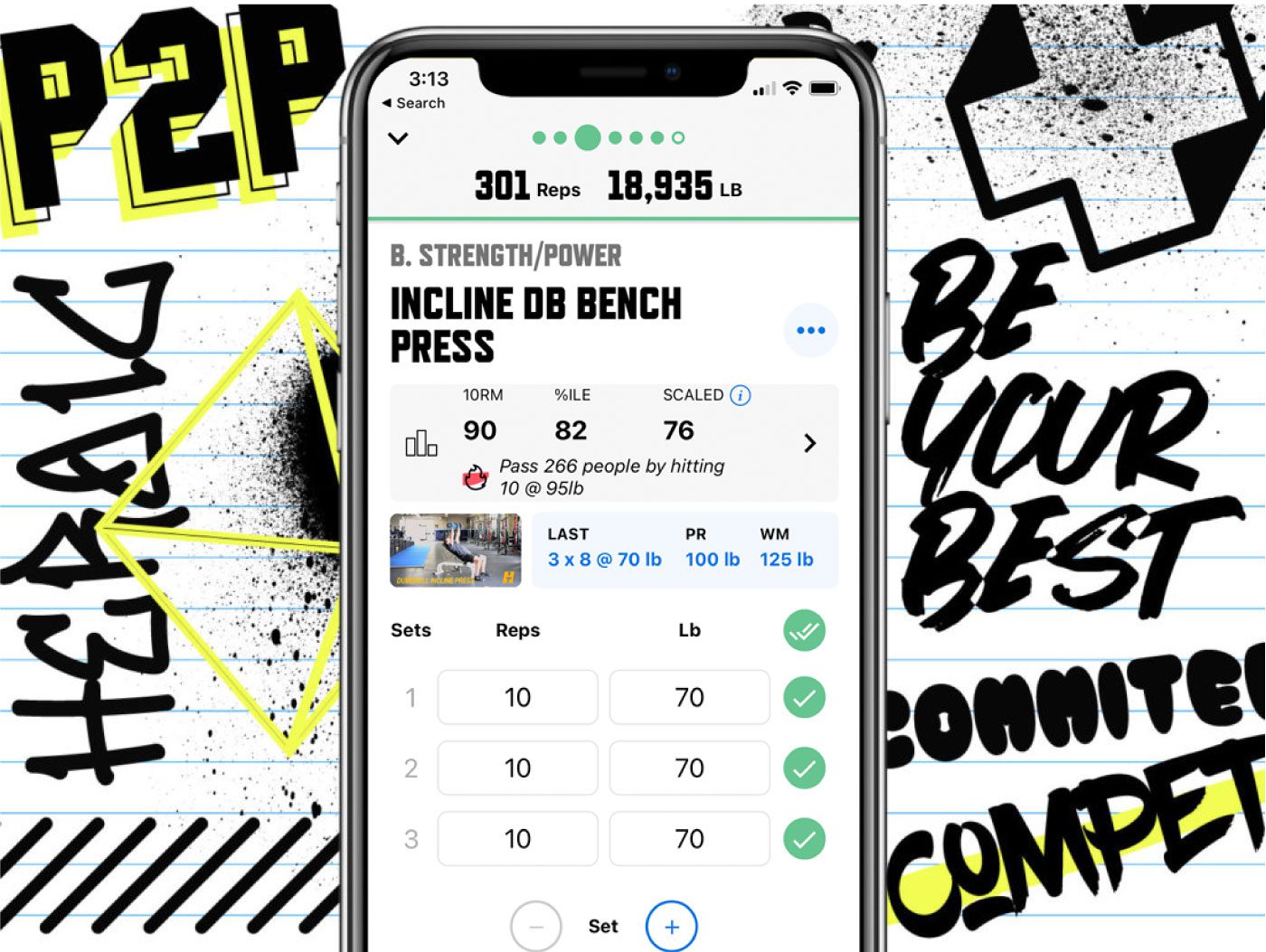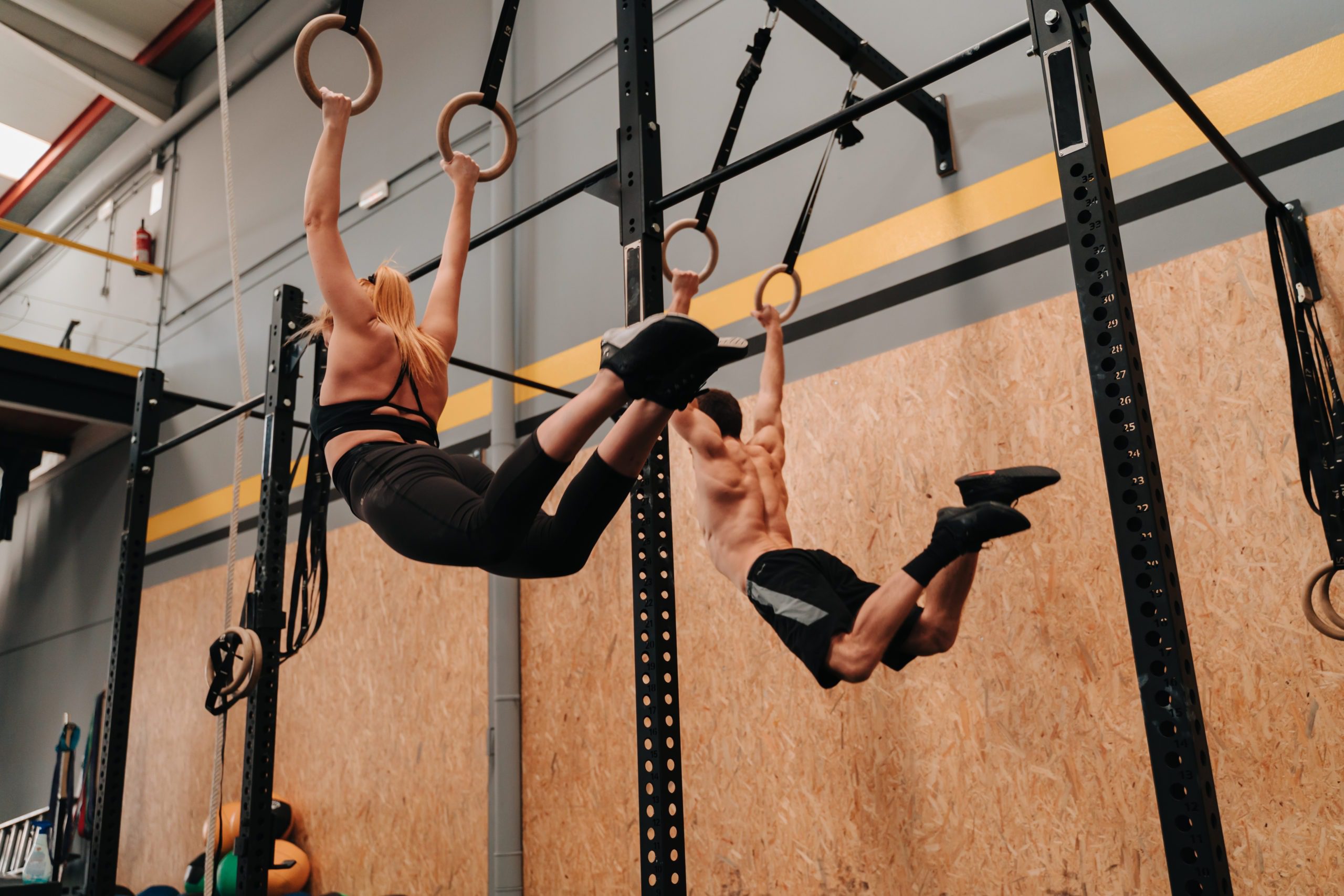Your Guide to a Heavy Power Clean

It’s the simplest variation of the clean and jerk. It’s also arguably the easiest place to start when dipping your toes into the Olympic weightlifting pool: the power clean.

Get Faster & Stronger Under the Bar
Power cleans are one of the few technical lifts seen in the gyms of college football and NFL athletes. You don’t need a ton of finely-tuned lifting proficiency to land a power clean and it’s useful as heck in terms of practicing raw force production (like the kind you need when tackling a rival bulldozer). Football players maxing out their power cleans should be its own spectator sport.
Just like the power snatch, the power clean helps a lifter work on explosiveness, speed, and timing. And they’re an easy lift for young or new athletes to start learning these skills before progressing into full clean and jerks. If you struggle with hip mobility in a deep squat, the power clean is an abbreviated movement that doesn’t require a full squat.
The only difference between a full clean and a power clean is where you catch the bar.
The power position
Catalyst Athletics head coach, Greg Everett, gives a succinct picture for the power position:
“All downward movement must be stopped with the lifter’s thighs above horizontal. The power clean is simply a clean without a full-depth squat to receive it.”
To keep things simple, the power position refers to your body in space, not where you’re holding a barbell. Hitting the power position for a clean means your chest is up, hips in flexion, and knees are bent, but not past parallel (90°) or in a full-depth squat.
Sometimes athletes and coaches have different ideas about what counts as “power” for the receiving position. If it’s not super obvious (i.e. you catch the bar really high), it can be hard to tell if your thighs are above parallel or just barely past it. For most coaches, anything past parallel is a no-go.
Apart from being a useful technical drill, power cleans are regularly programmed in CrossFit workouts as a lighter, faster variation of the full clean. Getting your power clean form on point will help with barbell cycling in metcons and developing your raw athletic strength.
Check out our pointers for landing your next power clean PR.


DOWNLOAD
trainheroic’s
free APP
How to power clean
Power clean points of performance
Setup
Find a hip-width stance with a loaded barbell on the floor. The bar should be over your midfoot when you look down. Crouch down and grip the bar with a clean grip—for most people that’s just a hair wider than your standard deadlift grip. Get your chest over the bar, arms straight, and wrists down.
First Pull: Fast
Keep your spine neutral (no hyperextending or popping your butt out) and initiate the first pull from the floor to your knees. You don’t need to bounce or rock excessively like a crazy parrot, but you can use a little momentum to get the weight moving as long as you control the bar path. Let your hips and chest rise at the same time. This is considered the “slowest” of the three pulls.
Second Pull: Faster
The second pull starts when the bar reaches your knees. Keep the bar close to your body as your shoulders rise and hips continue to extend. Keep your arms straight and don’t move the barbell out around your knees. This pull should be a little faster than the first one.
Third Pull: Lightspeed
The third pull starts about when the bar reaches your upper thigh and should be the fastest pull. Keep the bar close to your body and wait until the last second—when the bar reaches your hip crease—to jump upward and extend into your hips like you’re about to do a backflip. Shrug your shoulders at the top to get the bar as high as possible. Pull up on the bar letting your elbows bend, but keeping them over the bar.
Turnover & Catch: Put on the Breaks
Up to this point, every part of the movement is the same as a regular clean. Timing is now extremely important so you don’t “fail” the power clean by dropping into a full squat. Pull your body under the bar and drive your elbows up to catch it across your shoulders before you hit a squat depth past parallel. Aim to catch the bar at the same time your feet hit the floor from the aggressive jump. The tricky part here is slamming on the breaks after working so hard to create speed through the three pulls.
It’s common to see athletes starfish their legs out into a wider stance when catching a heavy power clean. While it looks pretty ugly, this allows for a broader base to support the weight on the front rack and makes it harder to drop into a full squat.
The Marketplace: Shop Expert Programming from Real Coaches
Sometimes all you need to reach your destination on your fitness journey is an expert guide. We’ve got you covered.
The TrainHeroic marketplace is the only place to purchase programming from the World’s best coaches, delivered through the immersive training experience of the TrainHeroic app.
Browse from thousands of programs for any goal and every type of athlete.
Or, join a monthly programming membership to connect with a real coach and community of athletes training just like you. Try any programming subscription free for 7 days.

What to work on for a stronger power clean
Like any other Olympic lift, you can develop your skills and increase your chances of setting a new power clean PR with some strategy. If you segment the movements and grind away at those individual pieces, your weaknesses will become the strengths you need to slaughter your old numbers.
Clean pulls
There are a TON of different ways to work on clean pulls, but pulling from the floor to your hips is the most basic. This gives you time to focus on nailing the fast-faster-fastest speed progression needed to pull the bar as high as possible. Clean pulls also strengthen your back and hamstrings so pulling heavy is less of a mental stick point. If pulling from the floor is a struggle for you, start here.
hang power cleans
Like with clean pulls, there are a few different ways to work on hang power cleans depending on your needs. The hang position takes out the first pull from the floor so you can concentrate on just the second and third pulls. From the hip, you’ll lower the bar back down to one of the hang positions and pull from there—upper thigh, mid-thigh, at the knee, or right below the knee.
2-position power cleans
This variation involves two power clean reps starting at different positions. A common way to do it is with rep one starting from the floor and rep two from the knee, but you can come up with any combination based on your weaker positions. This drill is intended to work your positioning for more than one pull segment at a time.
Block power cleans
Another drill that removes the first pull from the equation, power cleans from the block ensure that you can take a second to set up for the optimal pulling position at the knee or below the knee. Pulling from the blocks forces you to generate speed and momentum from a dead stop over a shorter distance.
pin front squats
If you have trouble hitting the brakes when you catch a power clean and you sink lower into the squat than you should, try working on front squats from a high pin or block setting. Again, this movement is designed to get you generating force against the bar from a dead stop. Focus on bracing your core and driving up against the weight without jerking it.
parallel front squat
Another way to work on the concentric (up) stick point of the squat is the parallel front squat. The goal is to stop the descent of each front squat rep at parallel. Work on generating enough power in your legs, glutes, and core to stand up from the hardest part of the squat. Watch out for your knees on this one.
Be aggressive! *pom-poms*
The word “power” implies the most relevant component of fitness for this lift. Since the power clean is shorter than a full clean, you don’t have as much time and distance to say a prayer, drop under the bar, and rely on upward momentum from a squat. You have to make those final pulls count by dialing in your explosiveness.
Precision timing and aggressive upward acceleration will give you the highest possible landing point under the barbell. Securing a fierce power position with heavier weights takes strength, intentional footwork, and massive, sexy force production.
In case you need a little extra motivation to get that barbell bending and those plates bouncing, here’s some inspo from the big dogs:

Lily frei
Lily is TrainHeroic’s Marketing Content Creator and a CF-L1 with an English background. She was a successful freelance marketer for the functional fitness industry until being scooped up by TrainHeroic. An uncommon combo of bookish, artsy word-nerd and lifelong athlete, Lily is passionately devoted to weightlifting, CrossFit, yoga, dance, and aerial acrobatics. Find her showcasing her artist-athlete hobbies on IG @lilylectric.

Join the community
Sign up for the latest training news and updates from TrainHeroic

About TrainHeroic
Support
Made with love, sweat, protein isolate and hard work in Denver, CO
© 2021 TrainHeroic, Inc. All rights reserved.


